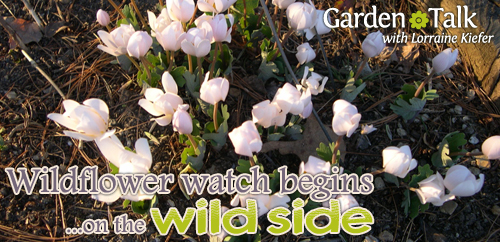
|
Often the very first blooms of the spring go unnoticed in a secluded woodland spot. Sometimes called ephemerals by gardeners because they are so transient or out for such a short time, wildflowers are tough and hardy to weather when grown in woodland conditions. Skunk cabbage may be the first to
unfurl near a swampy pond or creek and next hepatica may carpet a woodland area
rich in humus, but often there is no one near to appreciate them. These early
blooms are often subtle harbingers of th Many gardeners who have a shady area in their gardens find that wild flowers are a joy in the early spring. One of the very first to bloom here is the delicate little hepatica (Hepatica americana). Evergreen in some areas, this plant frequently just pops up with snowy white blooms. Sometimes it is seen with pink or even pale blue-lavender buttercup-like blooms. Called liver leaf, this gem is often the first wild plant to bloom in a shady corner. It will colonize under trees if the soil is moist and woodsy. One of the easiest wild ones to establish, it self-sows if there is enough moisture in the soil. Most wildflowers should not be dug from the wild unless the area is about to be bulldozed. A serious lack of habitat in many eastern states has seen the demise of scarce native plants. Whenever seeds are collected, care should be taken to take only minimal pods so that they are not wiped out in the wild. It is best to either seed them or buy from nurseries that propagate by seeding or tissue culture and do not collect wild plants. One of my most thrilling experiences propagating wildflower plants was
successfully making cuttings from trailing arbutus. The botanical name for
These plants are becoming very
rare in the wild and are also a bit difficult to grow. Friends of ours here in
Franklin Township have them throughout their woodland setting, with some coming
up in a lawn area bordering the woods. They allow me to take cuttings in late
June, when I try to root this
It is an elusive spring bloomer that often fills the air with fragrance. This one, however, must be sought out in the woods in order to get a whiff of its spring perfume. Arbutus is rarely available in nurseries. Most of the literature on this plant indicates it will not flourish in captivity. So you must go on a spring treasure hunt to smell the arbutus. It starts to bloom in mid-April. You must get down on your knees to find and smell it, as it is a ground cover and really does hug the ground. Trilliums bloom in April and are a favorite wild flower that will adapt well to the shade garden. There are many kinds of trillium, ranging in colors from white to a dark red, yellow, purple and pink. They also like a moist woodsy soil in which to reseed. Some of our best clumps of trillium have surprised us and come up in very unlikely spots. An April companion to the trillium is the Jack in the Pulpit, Arisaema
triphyllum. This perennial, with its unusual funnel-shaped bloom, is so exotic
looking it must be seen to be appreciated. There were many Another favorite that blooms so beautifully in late March and April is bloodroot, or Sanguinaria canadensis. The snowy white bloom pushes upward through the leaves as one of the first flowers of spring. Considered a medicinal herb by some old timers, the root contains several
alkaloids which are poisonous, most notably sanguinarine, which has shown
antiseptic, anesthetic and anticancer activity. American Indians used it for
rheumatism, asthma, bronchitis, lung ailments, laryngitis, and fevers. The
red-orange juice from the root was applied to warts, used as a dye and a
decorative
Bloodroot works great for the shade or woodland gardener and is among the showiest of all woodland spring blooms. The early white flowers are a welcome sign that spring is on the way, and the bold, green leaves will persist through the growing season. It is one of my favorites, and I love its early blooms in the herb garden. There are hundreds more wild plants. A good wildflower book and an hour in the woods is the best way to meet and know them. To all things there is season and often a place called home. Sometimes you don't have the place to grow a wild flower, sometimes you do. But there is no reason to go through life without ever kneeling in the woodlands to see and smell a delicate arbutus bloom. Happy Springtime! Walk in the display gardens at Triple Oaks for a breath of springtime. Visit www.tripleoaks.com. Garden classes and programs throughout the season. |
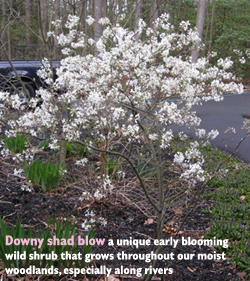 e season. Few are showy and they often
take one by surprise in a spot lighted by a ray of spring sunshine. A woodland
walk in early spring often reveals delicate surprises tucked among the leaves.
e season. Few are showy and they often
take one by surprise in a spot lighted by a ray of spring sunshine. A woodland
walk in early spring often reveals delicate surprises tucked among the leaves.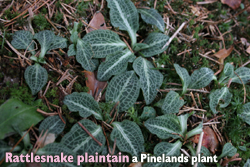 trailing arbutus is Epigaea repens and the common name is Mayflower. Cuttings
made in summer and then rooted in a propagation bed with ‘mist’ are slow to
grow, but what a joy when one grows and finally blooms in a pot in which it has
been growing. It roots and will grow in pots in a shady area for a short time,
but often disappears after growing in the garden for a few years if there is not
enough decaying leaf mold. Because of this, arbutus never takes well to a garden
setting. It needs an acid soil with no fertilizer other than a think layer of
decaying leaves, preferably of the oak variety. It needs a very specific type of
acidy moist soil with leaf mold and humus on top and moist sand beneath in a
shady spot.
trailing arbutus is Epigaea repens and the common name is Mayflower. Cuttings
made in summer and then rooted in a propagation bed with ‘mist’ are slow to
grow, but what a joy when one grows and finally blooms in a pot in which it has
been growing. It roots and will grow in pots in a shady area for a short time,
but often disappears after growing in the garden for a few years if there is not
enough decaying leaf mold. Because of this, arbutus never takes well to a garden
setting. It needs an acid soil with no fertilizer other than a think layer of
decaying leaves, preferably of the oak variety. It needs a very specific type of
acidy moist soil with leaf mold and humus on top and moist sand beneath in a
shady spot.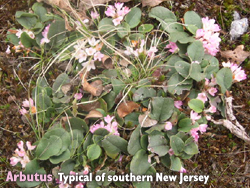 plant.
plant. 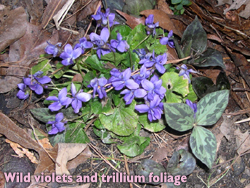 varieties at the
flower show this year, and all were awesome! This one also needs a moist, woodsy
soil, but again flourishes in my shady gardens under trees as long as I provide
water when dry as well as oak leaf mulch. Like the others, it also needs a shady
spot in which to thrive. Its red berries or seeds are an interesting feature
that last all winter.
varieties at the
flower show this year, and all were awesome! This one also needs a moist, woodsy
soil, but again flourishes in my shady gardens under trees as long as I provide
water when dry as well as oak leaf mulch. Like the others, it also needs a shady
spot in which to thrive. Its red berries or seeds are an interesting feature
that last all winter.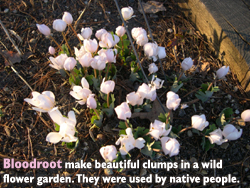 skin stain. But today we never use the plant and consider it
dangerous to even think about it.
skin stain. But today we never use the plant and consider it
dangerous to even think about it.